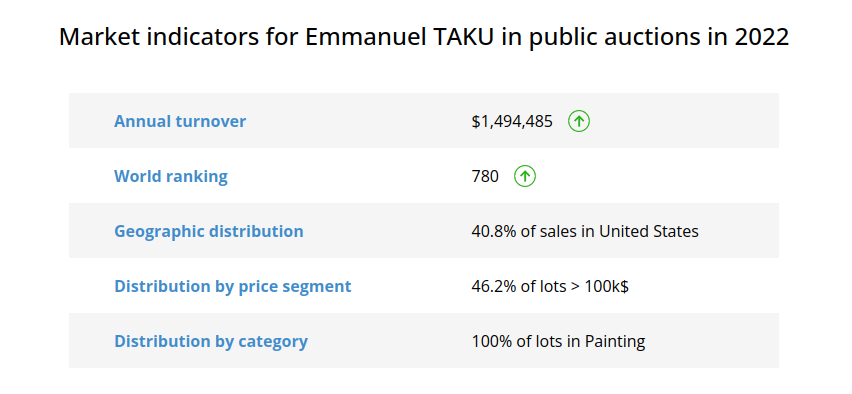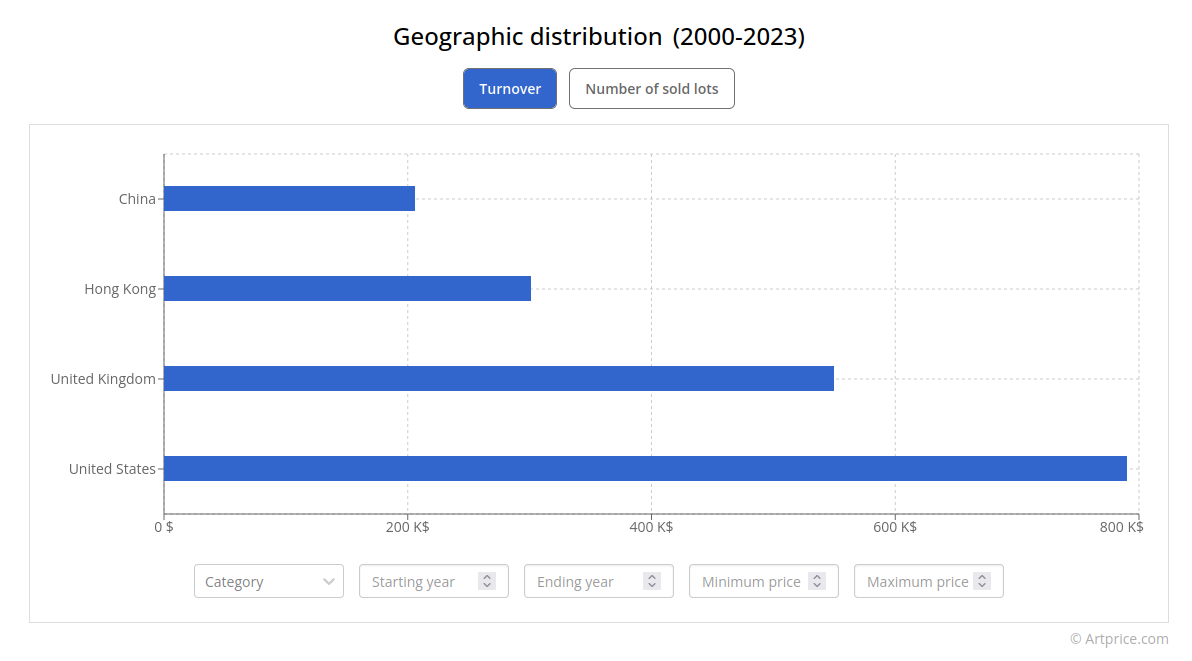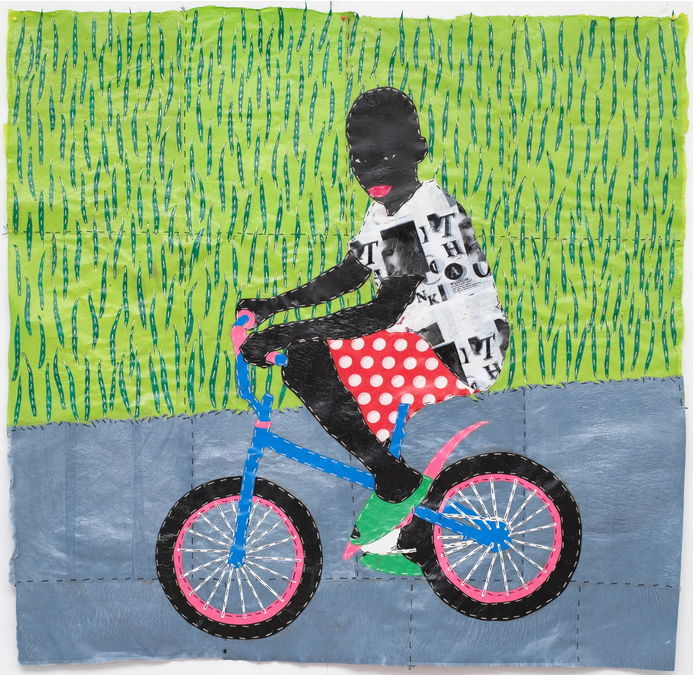Contemporary African art: discovering the work of Emmanuel Taku and Rufai Zakari
[08 Aug 2023]Emmanuel Taku… first beneficiary of the Noldor residency
Emmanuel TAKU paints black bodies with “potent reverence” by using the vocabulary of fashion magazines and classical Western statuary to paint black characters in confident and striking poses. Endowed with a supernatural quality, the men and women appear like the demi-gods of a metaphorical temple which – according to the artist – is intended as a “temple of blackness” in opposition to the “temples of whiteness” that the museums of traditional Western art have always been (until very recently). Taku’s invention of a new genre of black portraiture is comparable to that of British artists Lynette Yiadom-Boakye and Lubaina Himid, as well as fellow Ghanaian Amoako Boafo, with whom Taku trained at the Ghanatta Institute of Art and Design. Taku nevertheless stands out from his peers by the mix of techniques he employs: his figurative portraits are often augmented with collages and often associated with screen-printed ornamental work, developed during his residency at Noldor in 2020.
Noldor residency as a launching pad
Emmanuel Taku was the first artist selected for Accra’s four-week Noldor Residency which not only acts as a creative incubator but also as a launch pad for young African artists. Inaugurated in November 2020, the Noldor Residency bills itself as Ghana’s first independent artist residency and scholarship program for contemporary African and African-diaspora artists on the continent. It aims to be “commercially conscious” by being a space for research and creative development in connection with the local and international cultural industry. Noldor works hand in hand with other cultural organisms, both public and private, ranging from foundations to galleries, to support and disseminate contemporary creation from Ghana.
At the end of his residency, Emmanuel Taku exhibited a selection of 10 works at Noldor between the end of 2020 and January 2021 under the title Temple of Blackness – It Takes Two. That first solo exhibition led to a second, The Chosen Few, presented this time at the Maruani Mercier Gallery in Knokke in Belgium (3 April – 15 May 2021). In July of the same year, the prestigious Phillips auction house introduced Taku’s work to the international art market, offering his first painting at auction, The Amethyst Pair, produced during the artist’s Noldor Residency. The work elicited keen enthusiasm from bidders which subsequently attracted the attention of the other major auction houses. As a result, Emmanuel Taku became one of the most coveted African artists of 2022.

That first auction result was a major boost
When Phillips included The Amethyst Pair (2020) in its London New Now sale in July 2021, it provided an estimate of $14,000 – $21,000. But – against a backdrop of particularly strong demand for work by young Ghanaian artists – the bidding dwarfed that range, reaching almost $100,000 ($95,930 incl. buyers fees). That first success immediately led to others: Phillips repeated the experience in November 2021, this time in New York, with the canvas Sisters in Pink (2021). The painting of four characters on a pink background went for $189,000 versus a high estimate of $20,000. The following year, Phillips sold eight paintings by Taku at auction, while its competitors Christie’s and Sotheby’s, having observed the keen interest aroused by Taku’s works, included the artist in their New York sales. Christie’s even sold a painting in Hong Kong for $144,000 (A Red Pair, 2021, 147.3 x 129.5 cm, on 27 May 2022). The paintings he produced during his Noldor Residency are the most sought-after today, as they mark a real turning point in Taku’s creative approach and career. One of them set the artist’s current auction record at $283,000 in March 2022 (Sisters in Lilac, 2021, Phillips, London).
With a total annual auction turnover of $1.49 million last year, Emmanuel Taku has become in just a few months the third most successful Ghanaian artist of his generation on the global art market, behind Amoako Boafo and Isshaq Ismail.
Emmanuel Taku’s geographic distribution at auction (copyright Artprice.com)

Rufai Zakari, transforms waste into lush works
At 30, Rufai Zakari’s work has already been shown in London, Palm Beach, Berlin, New York, Boston, Chicago and Accra, his birthplace. He is now championed by Breeder Galleries, which presented his work during the Armory Show in New York last year, and by Kristin Hjellegjerde, a major gallery present in London and Berlin that has already programmed a solo exhibition of the artist’s work in October 2023 at one of its London branches. His works have also entered key private collections, including that of the American collector Arthur Lewis, where they rub shoulders with paintings by Amy Sherald, Kerry James Marshall and Amoako Boafo.
While works by Rufai ZAKARI have already won the hearts of several international cultural players, they are breaking onto the art market somewhat discreetly. So far, he only has only two auction results to his name – for Zakaiya II (2020) and Waiting Room i (2021) – which both fetched fetched around $14,000 each. Both results were hammered by the influential auctioneer, Phillips, in London in 2021 and in New York in 2023. International contemporary art collectors are therefore currently familiarizing themselves with a work that should arouse growing interest both in terms of its pictorial qualities, but also in terms of the environmental and social issues it addresses.
Rebuilding with what is lost…
 As a child, Rufai Zakari and his friends would roam the streets of Bawku, Ghana, collecting discarded plastic bags and food wrappers to make toys and sculptures. Years later, waste collection has remained at the heart of Zakari’s practice via the recycling of discarded materials to create collages that mimic painting. The results are works of lush contrasts, representing characters who are remarkable for the power of the patterns and colors that compose them.
As a child, Rufai Zakari and his friends would roam the streets of Bawku, Ghana, collecting discarded plastic bags and food wrappers to make toys and sculptures. Years later, waste collection has remained at the heart of Zakari’s practice via the recycling of discarded materials to create collages that mimic painting. The results are works of lush contrasts, representing characters who are remarkable for the power of the patterns and colors that compose them.
At first, Zakari only worked with his family: his wife and parents would wash, cut and dry hundreds of pieces of plastic before flattening them with a heat press. But his success now allows him to hire a team from his local community in Bawku, a team that supports every step of the process. The fact of actively involving local communities is a fundamental point for Zachari, because creative work in its collective form involves dialogue around the current and global issues addressed by these works, such as climate change, consumerism, industrialization and the still restricted place of women in Ghanaian society. It is not only about creating, but also about raising awareness and inspiring an entire community to concretely transform society. Driven by his optimism and ambition to rebuild what has been lost, Zakari is also an environmental activist, creative director of two NGOs involved in beach cleanups and offering educational workshops to schools, religious institutions and other communities on waste management and climate change.

Rufai Zakari, I Love my bike, 2022. Copyright The Artist. Courtesy galerie KRISTIN HJELLEGJERDE
.
Article Artprice by Artmarket published in our partner magazine Diptyk Magazine




 0
0
